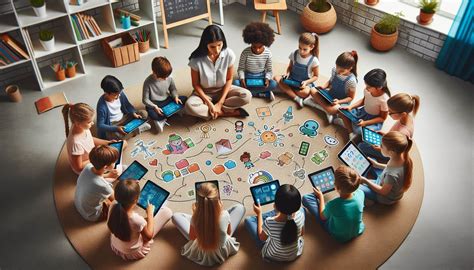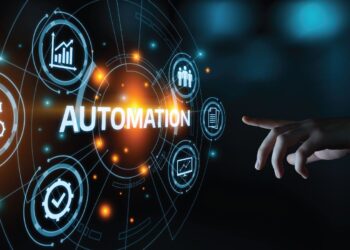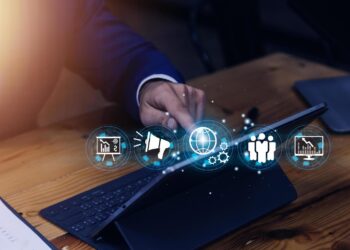In the vast landscape of educational history, one model has largely dominated: the factory-era, one-size-fits-all approach. Classrooms filled with diverse minds have often been subjected to a single curriculum, delivered at a uniform pace, and measured by a standardized yardstick. This method, while capable of producing results, inherently leaves potential untapped. It can bore the swift learner and overwhelm the one who needs more time, failing to address the fundamental truth that every individual learns differently. But the monolithic classroom is beginning to crumble, replaced by a dynamic, responsive, and far more effective paradigm: Personalized Learning Systems (PLS).
This is not merely a new teaching trend; it is a fundamental re-engineering of the educational process, powered by technology and a deeper understanding of cognitive science. A Personalized Learning System is an educational framework that tailors instruction, content, and pacing to the unique needs, strengths, weaknesses, and interests of each individual learner. Instead of forcing the student to adapt to the curriculum, the curriculum adapts to the student. This article will delve into the intricate workings of these transformative systems, explore their profound benefits, navigate their inherent challenges, and look ahead to the future they are actively shaping.
What Exactly Defines a Personalized Learning System?
To truly grasp the power of PLS, it’s essential to distinguish it from related but distinct educational concepts. It’s not simply about letting students work at their own pace with the same materials, nor is it just about offering different activities for the same lesson.
- Differentiated Instruction: This is where a teacher adjusts their instruction to cater to a group of students. For example, they might provide one group with a more challenging text and another with foundational reading material to achieve the same learning objective. The goal is the same, but the path is slightly varied by the teacher for groups.
- Individualized Instruction: This typically focuses on pacing. A student can move through a pre-set curriculum at their own speed. However, the content and learning objectives remain largely the same for everyone. It’s like letting everyone run the same race at their own pace.
- Personalized Learning: This is the most holistic approach. It encompasses both pacing and instruction but adds a crucial third dimension: student agency. Personalization considers the learner’s preferences, interests, and aspirations. The learning path itself can change, not just the speed at which it’s traveled. The goals can be co-created with the learner, making education a “do with” rather than a “do to” process. A PLS is the technological engine that makes true personalization possible at scale.
At its core, a Personalized Learning System is a shift in philosophy. It moves the center of gravity from the teacher as the sole purveyor of knowledge to the student as an active co-architect of their educational journey.
The Engine Room: How Personalized Learning Systems Function
The magic of a PLS isn’t magic at all; it’s a sophisticated, cyclical process driven by data and intelligent algorithms. This process can be broken down into four key operational stages.
A. Comprehensive Data Collection A PLS is constantly gathering information to build a rich, multi-dimensional profile of each learner. This goes far beyond simple test scores. Data points include:
- Performance Data: How quickly a student answers questions, which concepts they master easily, where they consistently struggle, and the types of errors they make.
- Engagement Data: How much time is spent on a particular module, which types of content (videos, text, simulations) they interact with most, and even mouse movements or click patterns that can indicate confusion or confidence.
- Preference Data: Students may be given choices about learning topics or content formats, and the system logs these choices to understand their interests.
- Self-Reported Data: Learners can provide feedback, set goals, and reflect on their own understanding, adding a qualitative layer to their profile.
B. Intelligent Data Analysis This is where Artificial Intelligence (AI) and Machine Learning (ML) come into play. Raw data is useless without interpretation. The system’s algorithms analyze the collected information to:
- Identify Knowledge Gaps: The system pinpoints the precise concepts or prerequisite skills a student is missing.
- Recognize Learning Patterns: It can determine if a student learns best through visual aids, auditory lectures, or hands-on practice.
- Predict Future Performance: Based on current progress, predictive analytics can flag students who are at risk of falling behind, allowing for proactive intervention.
C. Dynamic Content and Path Adaptation Based on the analysis, the system makes real-time adjustments to the student’s learning experience. This is the “personalization” in action:
- Pacing: If a student masters a concept quickly, the system moves them to the next topic. If they struggle, it provides more time, alternative explanations, and foundational practice exercises.
- Content: The system can recommend different resources to teach the same concept. A student struggling with a text-based explanation might be shown an animated video or an interactive simulation.
- Pathway: For more advanced systems, the entire sequence of learning can change. The system might re-route a student to shore up a weak foundational skill before tackling a more complex topic that depends on it.
D. Continuous Feedback Loop Personalized learning is not a one-way street. The system provides constant, immediate feedback to the learner. Instead of waiting days for a graded test, a student knows instantly whether their answer was correct and, more importantly, why. This loop extends to the educator as well. Teachers are equipped with dashboards that provide a high-level overview of class progress and detailed reports on individual students, allowing them to move from being a “sage on the stage” to a “guide on the side,” providing targeted, human support where it’s needed most.
The Transformative Benefits of Personalized Learning
Implementing a PLS is a significant undertaking, but its advantages can fundamentally reshape educational outcomes for students and teachers alike.
A. Dramatically Enhanced Student Engagement When learning is relevant to a student’s interests and calibrated to their ability level, it ceases to be a chore and becomes a compelling challenge. By giving students a degree of control over what and how they learn, PLS fosters a sense of ownership and intrinsic motivation. Boredom and frustration, the twin killers of curiosity, are significantly reduced.
B. Vastly Improved Learning Outcomes The core promise of personalization is mastery. By ensuring each student builds a solid foundation before moving on, PLS helps close knowledge gaps that might otherwise compound over time. Students achieve a deeper, more resilient understanding of subjects, leading to better retention and higher achievement on assessments.
C. Cultivation of Self-Regulated Learning Skills In a traditional system, students are often passive recipients of information. A PLS requires them to be active participants. They learn to set goals, track their own progress, identify areas where they need help, and select strategies to overcome challenges. These metacognitive skills—learning how to learn—are among the most critical for success in higher education and the modern workforce.
D. Increased Efficiency and Efficacy for Educators Personalized learning systems do not replace teachers; they empower them. By automating the tasks of grading basic assignments, tracking progress, and delivering foundational instruction, PLS frees up educators to focus on higher-value activities: leading small group discussions, providing one-on-one mentoring, and designing creative, project-based learning experiences.
E. Effectively Closing Achievement Gaps In a single classroom, a teacher faces the impossible task of meeting the needs of advanced learners, students at grade level, and those who are struggling. A PLS provides the ultimate differentiation, challenging gifted students with advanced material while simultaneously providing robust support and scaffolding for those who need it, all within the same learning environment.
F. Essential Preparation for the Future Workforce The modern economy values skills like adaptability, critical thinking, problem-solving, and creativity. A PLS environment naturally cultivates these abilities. Students are constantly faced with unique challenges and must devise their own strategies for success, preparing them for a future where the ability to learn and adapt is more important than any single piece of memorized information.
Navigating the Hurdles: Challenges and Ethical Considerations
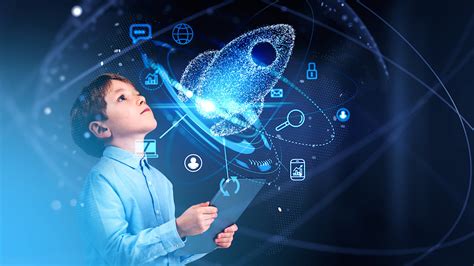
Despite its immense potential, the path to widespread adoption of PLS is not without significant obstacles and important ethical questions that must be addressed.
A. Data Privacy and Security These systems collect an unprecedented amount of data on students. Protecting this sensitive information from breaches and misuse is paramount. Clear policies must be established regarding who owns the data, how it is used, and how it is secured. Transparency with students and parents is non-negotiable.
B. The Persistent Digital Divide The effectiveness of a PLS is contingent on access to reliable technology—devices and high-speed internet. Disparities in access between affluent and low-income communities threaten to widen, rather than close, the achievement gap if not addressed through public policy and investment.
C. Quality of Content and Algorithms A PLS is only as good as the educational content it contains and the algorithms that drive it. Low-quality, unengaging content will fail, no matter how sophisticated the delivery system. Furthermore, algorithms can have hidden biases, potentially perpetuating stereotypes or inequities if not carefully designed and regularly audited.
D. The Critical Need for Teacher Training and Role Shift Transitioning to a personalized learning model requires a profound shift in the role of the teacher. This is not easy and requires extensive professional development, ongoing support, and a cultural change within schools and districts. Teachers need to be trained not just on how to use the software, but on how to be effective mentors and facilitators in this new environment.
E. The Risk of Over-reliance on Technology Education is a fundamentally human endeavor. While technology is a powerful tool, an over-reliance on it can risk diminishing the vital social and emotional learning that happens through peer-to-peer and student-teacher interaction. A successful implementation, often called “blended learning,” balances screen time with collaborative, hands-on projects and meaningful human connection.
F. Significant Implementation Costs The initial investment in PLS can be substantial, encompassing software licensing, hardware procurement, network infrastructure upgrades, and comprehensive teacher training. For already-strained school budgets, this presents a major barrier to entry that requires strategic long-term financial planning.
The Future is Now: Trends Shaping Personalized Learning
The field of personalized learning is evolving at a breathtaking pace, driven by advances in technology and cognitive science. The next wave of PLS will be even more powerful and integrated.
A. Hyper-Personalization Future systems will go beyond just academic performance. They will adapt to a student’s emotional state, cognitive load, and even learning style preferences in real-time, perhaps by using biometric data or AI-powered sentiment analysis.
B. Integration of Virtual and Augmented Reality (VR/AR) Imagine a history lesson where a student can walk through ancient Rome or a biology class where they can perform a virtual dissection. VR and AR will provide immersive, hands-on learning experiences that can be personalized for each student.
C. Advanced Gamification Beyond simple points and badges, sophisticated gamification will embed learning within compelling narratives and game mechanics. This will leverage principles of game design to maximize motivation, persistence, and problem-solving in a fun and engaging way.
D. Lifelong Learning Platforms Personalized learning is not just for K-12. These systems will increasingly serve learners throughout their lives, from higher education to corporate training and personal development. An individual’s learning profile could follow them, allowing for seamless upskilling and reskilling throughout their career.
A New Dawn for Education
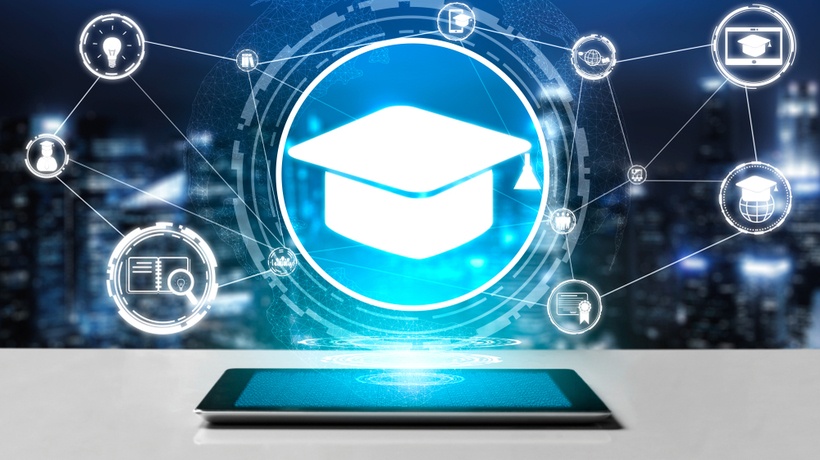
Personalized Learning Systems represent a paradigm shift of immense consequence. They offer a compelling solution to the inherent limitations of the industrial-age education model, promising a future where every learner can reach their full potential. By leveraging technology to adapt to individual needs, these systems foster deeper engagement, superior outcomes, and the development of critical skills for the 21st century.
The journey is complex, fraught with challenges related to equity, privacy, and implementation. It demands thoughtful planning, ethical oversight, and a profound commitment to supporting our educators. However, the potential rewards are immeasurable. We stand at the threshold of a new dawn in education, one where learning is no longer a uniform march but a unique, personal, and empowering journey for every single student. The Personalized Learning System is not just a tool for the future; it is the very blueprint for it.

